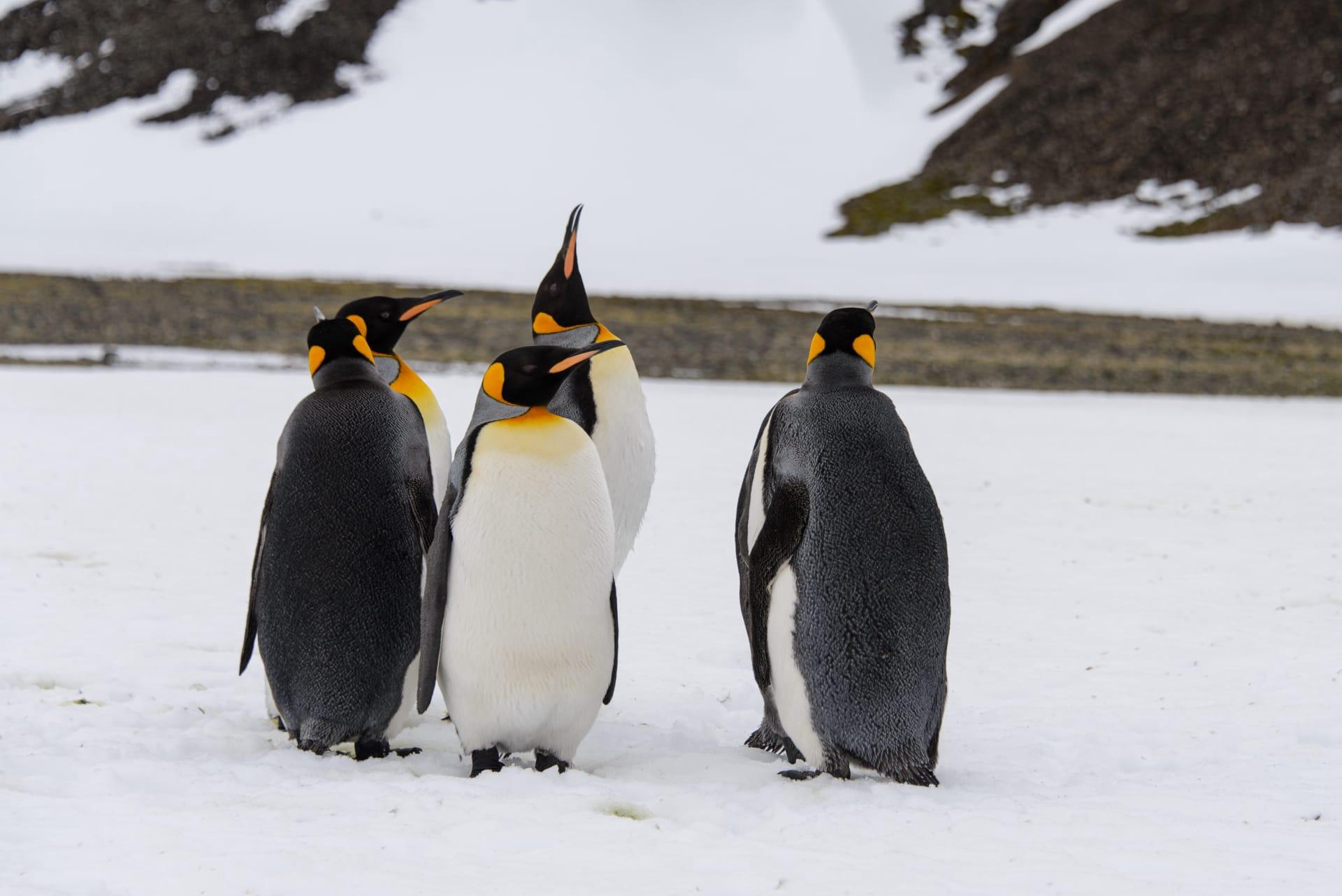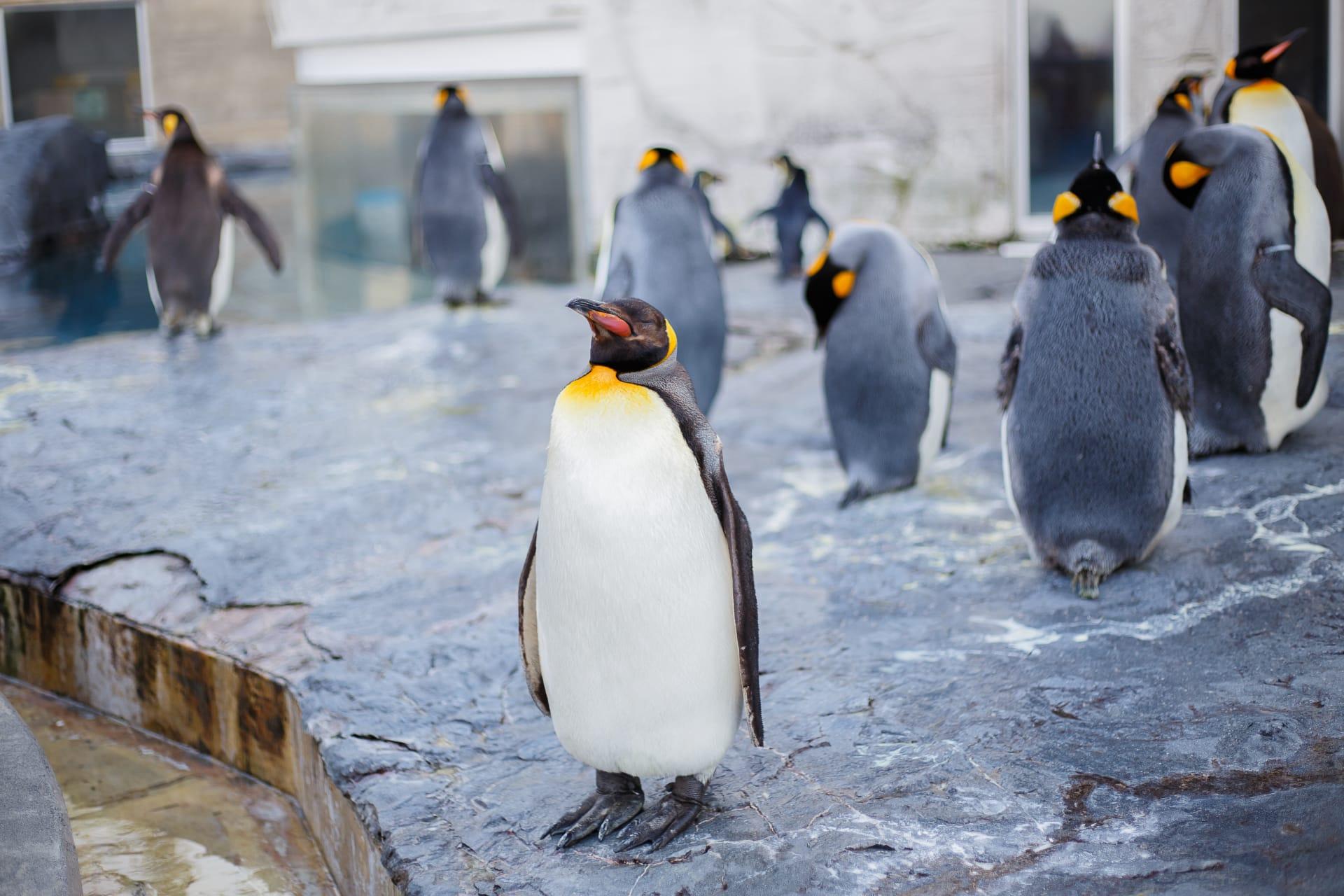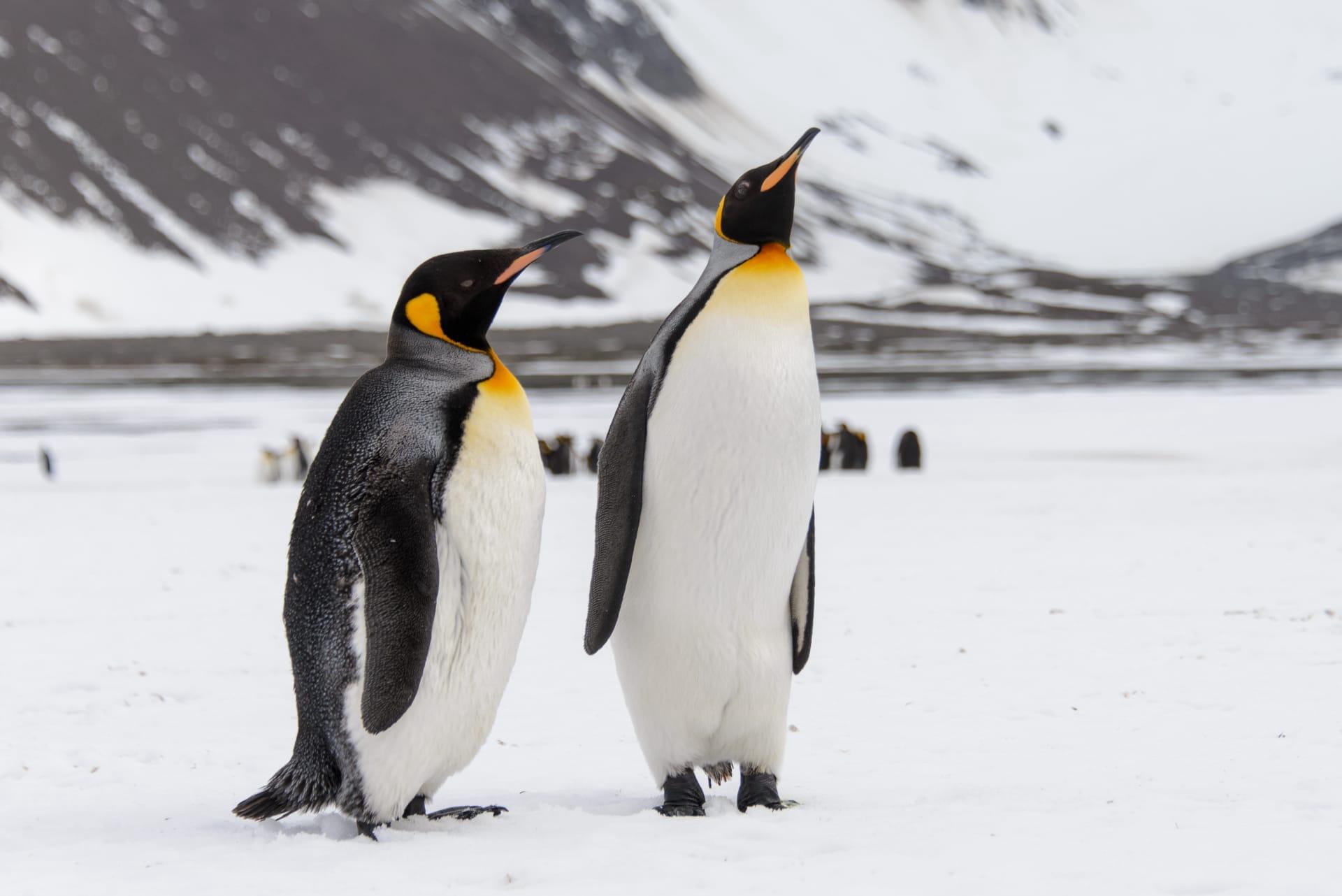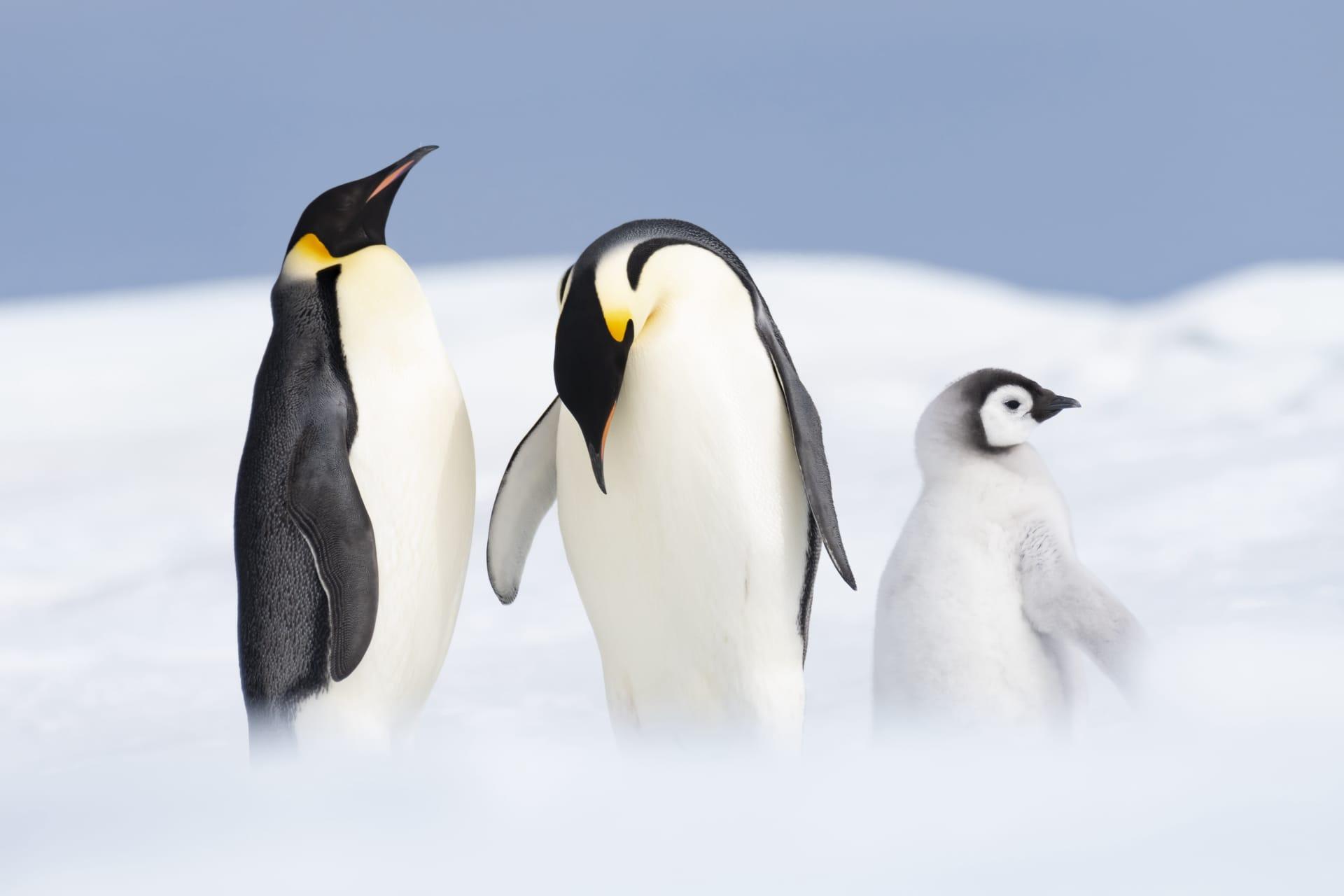Emperor Penguin Characteristics
- Home /
- Mini Encyclopedia /
- Animal /
- Emperor Penguin Characteristics
1
Emperor Penguins, standing tall at up to 4 feet and weighing as much as 88 pounds, are the largest of all penguin species. Their size is a marvel, but it's their longevity that's equally impressive - these birds can live up to 20 years in the wild. Sporting a sleek black and white plumage with yellowish-gold markings near their ears and on their chest, they are a striking sight in their icy habitat.
The most remarkable organ of an Emperor Penguin is its highly adapted respiratory system. This system enables them to dive to depths of over 500 meters and hold their breath for more than 20 minutes while hunting. This feat is made possible by their unique ability to store oxygen in their muscles and blood, and to reduce their heart rate, conserving oxygen during deep dives.

2
Question: How do Emperor Penguins stay warm in the extreme cold of Antarctica?
Answer: Emperor Penguins have developed a multi-faceted approach to combat the frigid temperatures of their environment. Firstly, they are equipped with a thick layer of blubber under their skin, providing crucial insulation. Additionally, their feathers are tightly packed and overlap to create a waterproof and windproof layer. Beneath these feathers lies a unique system of air sacs, which they can inflate to trap warm air. Together with their huddle behavior, where they gather in large groups to share body heat, these adaptations enable them to survive temperatures as low as -60°C.

3
Emperor Penguins are remarkable swimmers, using their powerful flippers to propel themselves at speeds of up to 6 miles per hour. On land, they may appear awkward, but their waddle is an efficient way to conserve energy while walking on ice. They also slide on their bellies, a movement called "tobogganing," which helps them move quickly and with less energy expenditure.
In terms of hunting, these penguins primarily feed on fish, squid, and krill. Their excellent diving ability, combined with keen eyesight, allows them to spot prey in the dim waters. Once they locate their prey, they use their speed and agility to catch it, often diving repeatedly to gather enough food to feed themselves and their chicks.

4
The Emperor Penguin inhabits the harsh and frigid environment of Antarctica, specifically on and around its ice shelves. These conditions are among the most extreme on Earth, with temperatures dropping below -50°C and winds reaching up to 200 km/h. Despite these challenging conditions, Emperor Penguins have adapted remarkably well, thanks in part to their physical and behavioral adaptations.
Emperor Penguins have a unique breeding cycle that aligns with the Antarctic winter. In May or June, they trek up to 75 miles to reach their breeding grounds on the ice. Here, they engage in a complex courtship ritual, followed by the laying of a single egg. Remarkably, it's the male that incubates the egg by balancing it on his feet and covering it with a feathered fold of skin, enduring the brutal winter without eating, while the female returns to the sea to feed.

5
Book: "The Emperor's Egg" by Martin Jenkins, published in the United Kingdom in 1999, offers a delightful and informative look into the life of Emperor Penguins. Aimed at younger readers, it combines engaging narrative with factual insights, focusing on the unique role of male Emperor Penguins in incubating their eggs during the Antarctic winter.
Book: "Emperors of the Ice" by Richard Farr, published in the United States in 2008, is a fascinating blend of historical narrative and scientific exploration. It recounts the harrowing Antarctic journey of scientist Apsley Cherry-Garrard and provides an in-depth look at the biology and behavior of Emperor Penguins in the context of early 20th-century exploration.